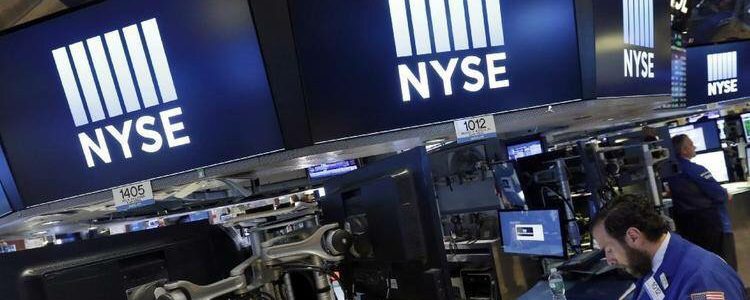|
Federal Reserve raises benchmark rates – The Federal Reserve announced Thursday that they had increased their benchmark interest rates. The 1/4% increase was the second increase in less than 90 days, but just the third increase in a decade. The Federal Funds and Discount Rate, the rate which the Fed charges banks for overnight lending, now stands at about 1%. It had dropped to 0 – 1/4% during the recession and stayed at that level until December 2015 when the Fed rose the rate by 1/4%. The economy showed signs of slowing in the first two quarters of 2016, so rate hikes were put on hold. The next increase didn’t happen until December 2016, and the third increase was March 16. The Fed still expects two more increases this year, and stated that the policy still is “accommodative”, and “neutral” and would have a rate near 3%. Following the increase, banks increased their prime rates by 1/4%, which increased all loans tied to prime like home equity lines of credit, and most business loans. Some banks increased rates paid out to on bank accounts, which will increase adjustable rate mortgages, as those are tied to bank’s cost of funds. The 15 and 30 year fixed actually dropped after the announcement. They had increased over the last two weeks. Higher rates generally mean less inflation. Interest rates fixed for long periods need to be at a higher rate than inflation, which they call “the spread” to make a profit. To put it simply, the Fed uses interest rate policy to help the economy when slow by lowering rates. Lower rates make borrowing less expensive to encourage people and companies to borrow more to increase investing. When the economy is so strong that inflation is a risk, the Fed increases rates to slow the economy so it doesn’t overheat. Technically, that’s not exactly what has happened. What they have done is raised rates and will continue to raise rates to a “neutral rate”, as they dropped rates to the lowest level in history, because the recession was so deep. Now that job growth has been so strong, and we are seeing signs of inflation, they don’t feel that historically low rates are needed and are gradually trying to get them to a more neutral level. Without getting rates up they don’t have the valuable tool to drop them if the economy slows, as you can’t go down from zero!
Stock markets slightly higher this week – All eyes were on the Federal Reserve the last two weeks. Stocks dropped over the last two weeks on speculation that the Fed would raise its benchmark rates at the conclusion of their meeting on March 15, which they did. Following, the hike stocks actually rose making up about 1/2 of the drop over the last two weeks on speculation of a rate hike. It’s a funny thing, investors expect a hike which will increase borrowing costs and hurt profits, so stocks drop. Sometimes the hike doesn’t happen and rather than stocks rising they fall, because investors think that no hike means the economy is not as good as they thought and maybe the Fed knows something they don’t know. In this instance, the Fed’s statements about the strength of the economy outweighed the fears of higher borrowing costs and stocks increased. The Dow gained over 100 points after the rate hike was announced, making up all its losses earlier in the week. The Dow Jones Industrial Average closed the week at 20,914.62, up slightly from last week’s close of 20,908.72. The S&P 500 ended the week at 2,378.25 almost unchanged from its close of 2,372.60 last week. The NASDAQ closed the week at 5,901.00, up from last week’s close of 5,861.73. U.S. Treasury Bond yields dropped slightly despite Fed rate hike – The 10-year U.S. Treasury Bond closed the week yielding 2.50%, down from 2.58% last Friday. The 30-year Treasury Bond yield closed the week at 3.11% down from 3.16% last week. Mortgage rates follow bond yields, so we watch treasury bonds closely. Mortgage rates higher again this week – The Freddie Mac Primary Mortgage Survey released on March 9, 2017, reported that average mortgage rates from lenders surveyed for the most popular mortgage products were as follows: The 30-year fixed rate average was 4.30%, up from 4.21% last week. The 15-year fixed average rate was 3.42%, 3.50%, up from 3.42% last week. The 5/1 ARM average rate was 3.28%, up from 3.23% last week. California home sales pace, and prices continue to rise – The number of existing homes sold in California increased 4.7% month over month from January. Year over year the number of homes sold were up 4.9% from February 2017. The median price paid for a home in California was 478,790. The median price represents the point at which 1/2 the homes sell for more, and 1/2 sell for less. Month over month the median actually dropped, which we have often seen over the last year, as one month is not a large sample. Month over month the median dropped 2.2% from January. Year over year, which is a better indicator of price movement, were up 7.6 in February from February 2016. Inventory increased to a 4 month supply as more homeowners began putting homes on the market. That was up from 3.7 months in January, but down from 4.7 months last February. Inventory levels are also better to compare year over year due to seasonal purposes. Author, Syd Leibovitch
0 Comments
Leave a Reply. |
AuthorGenna Walsh Archives
February 2020
Categories
All
|


 RSS Feed
RSS Feed
